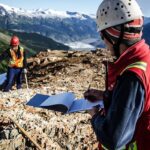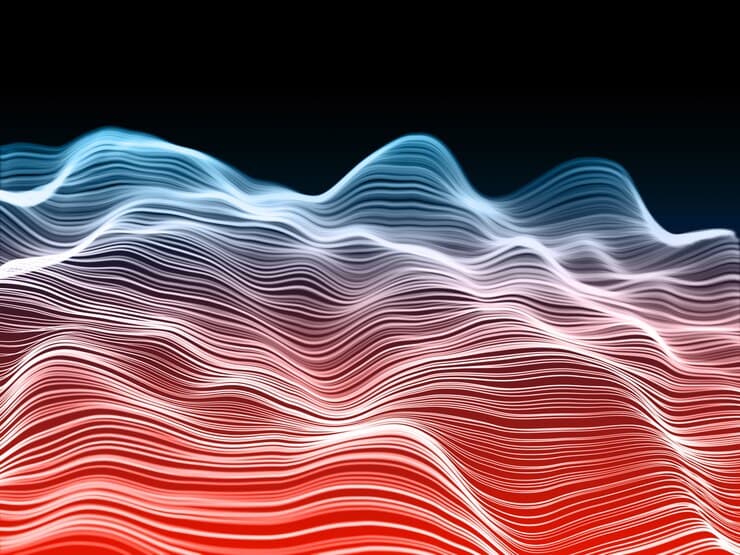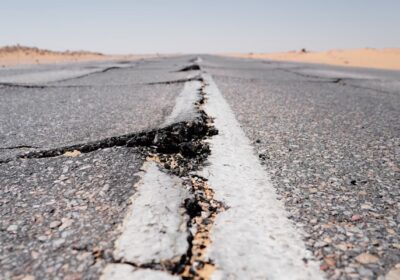
Deciphering the Nature of Brittleness
Brittleness, a fundamental attribute of rocks, eludes formal definition due to its multifaceted nature, presenting various perspectives for interpretation. Consequently, Tiryaki (2006) advocates for labeling it as a rock behavior rather than a rigid property.
The direct concern doesn’t lie solely in brittleness itself, as its standalone comprehension lacks practicality. Mining engineers pivot their attention towards a distinct attribute known as cuttability. This concept finds parallels across disciplines, captivating the curiosity of geologists, geophysicists, and engineers involved in domains such as petroleum, geothermal, and hydrology, manifesting as the intriguing property of frackability. In the realm of materials science, the counter property, termed fracture toughness, delineates a rock’s capacity to withstand fracture.
Deconstructing Misconceptions: What Brittleness Isn’t
When analyzing the concept of brittleness, it’s crucial to understand what it is not. This aids in dispelling common misconceptions and fostering a more profound understanding of this material property.
Brittleness vs. Frackability
Brittleness should not be mistaken for frackability or any other related material characteristics. Although both terms may trigger thoughts of stone or rock, they are distinct attributes with divergent implications in material science. Brittleness refers to the tendency of a material to fracture without significant deformation, while frackability describes the aptitude of a material, often a type of rock, to fracture under pressure for natural gas extraction.
Not Just Another Rock Property
Unlike basic rock properties such as density or velocity, brittleness isn’t easily measured or universally agreed upon. Density and velocity are condition-dependent attributes that we have standardized measurement methods for. However, brittleness poses more of an intricate property due to its interplay with factors like temperature, pressure, and the rate of applied force. Therefore, brittleness isn’t a simple rock property but rather a more complex trait needing a deeper understanding and sophisticated techniques to evaluate.
Brittleness and Elastic Moduli
Another common misconception is correlating brittleness directly with the material’s elastic moduli or assuming that it’s a linear combination of Young’s modulus and Poisson’s ratio. Although these properties are interconnected and influence a material’s behavior under stress, brittleness is not directly proportional to them. In reality, brittleness is a function of numerous material properties, making it more complex and unique.
Knowing what brittleness is not helps to avoid confusion and misunderstandings, ensuring a comprehensive and accurate interpretation of this pivotal material property. Remember:
- Brittleness ≠ Frackability;
- Not a simple, universally-agreed upon rock property;
- Not directly correlated to elastic moduli.
By debunking these myths, we can better understand the true nature of brittleness and its impact on a material’s overall characteristics.
Breaking Down Brittleness: A Closer Look
In material science, brittleness is a more intricate concept than one might initially consider. It’s dependent on multiple factors and can have varying implications based on the material in question and the particular conditions under which it’s evaluated.

When looking at brittleness, one has to take into account the specific attributes they are interested in. Are you concerned with how the material behaves under stress? Or perhaps more interested in the amount of energy required to fracture it? Maybe you’re curious to understand what occurs when it shatters? Many different perspectives come into play.
A comprehensive study by Hucka and Das in 1974 explored various ways to diagnose brittleness in rocks and other materials, providing us with several insights:
- Fragmentation Tendency: Brittle materials are known for their susceptibility to fracture under stress. They exhibit a high propensity to break, often creating a mix of fine and coarse fragments. This behavior can be highly pertinent considering the application of the material in question;
- Energy Absorption: Brittle rocks are somewhat low-energy when it comes to failure — they absorb relatively little energy before fracturing. In technical terms, the energy absorbed equals the area under its stress-strain curve;
- Minimal Deformation: Brittle materials typically undergo very minimal, if any, permanent deformation before failure. Depending on the testing conditions, this failure can be quick and catastrophic. This behavior contrasts with more ductile materials, which tend to deform gradually under strain before breaking;
- No Ductile Deformation: After passing their yield point or elastic limit, brittle rocks don’t undergo ductile deformation. It’s essential to note that many rocks don’t have a well-defined yield point due to their non-linear elasticity, making this trait vital in differentiating brittle materials.
Understanding brittleness is far from straightforward due to its dependence on various material properties and conditions. This complexity makes the quest to understand brittleness an intriguing journey, enriching our knowledge about the different characteristics and behaviors of the materials that make up the world around us.
The Complexity of Assessing Brittleness: A Multifaceted Approach
The assessment of brittleness in materials is a complex affair, made all the more intricate due to the array of stress types that can impact a material. From compression, tension, shear and torsion to bending and impact, the influence of each stress type adds an additional layer of complexity. These stresses can operate in an array of dimensions and across various time scales, making the simplistic uniaxial rig insufficient for comprehensively evaluating brittleness.
The study of brittleness and related properties such as frackability takes us on a comprehensive journey through the realm of material science. Various topics and considerations come into play:
- Examination of Rock Properties: A detailed look at various rock properties is critical to understanding how they influence brittleness. Attributes such as grain size, composition, and structure impact a rock’s response to stress;
- Measurement Techniques: The methods employed to measure these properties, both static and dynamic, can widely vary and have their own sets of pros and cons. Static measurements may not fully capture the behavior under dynamic, rapidly changing conditions;
- Brittleness Indices: This area delves into the various indices or scales used to quantify brittleness. Each index may have its own unique considerations and applications, making it essential to understand their implications thoroughly;
- Seismic Implications: The study of brittleness is crucial in predicting a rock formation’s response to seismic activities. Examining how brittleness impacts seismic wave propagation can provide valuable insights into earthquake prediction and mitigation;
- Frackability Estimate: A crucial area of study is whether we can reasonably estimate a rock’s frackability—a measure of its susceptibility to hydraulic fracturing—from seismic data. This knowledge can significantly impact fields such as natural gas extraction.
In summary, understanding brittleness is a multi-faceted endeavor demanding a comprehensive exploration of various factors. From the types and effects of stresses to the methods of measurement and their implications, every aspect contributes to a more profound knowledge of the subject. As we delve deeper into these critical areas, we gain a more robust and informed perspective on brittleness and its influence on material science.
Conclusion
In conclusion, the elusive nature of brittleness underscores its complexity, rendering it challenging to define formally. Tiryaki’s proposition to regard it as a rock behavior rather than a fixed property offers a more adaptable perspective. Moreover, the emphasis on practical applications, such as cuttability in mining engineering and frackability in various geological and engineering fields, highlights the importance of understanding rock characteristics within specific contexts. As research progresses, exploring these properties and their interrelations will undoubtedly contribute to advancements in multiple disciplines, shaping our comprehension of the Earth’s materials and their utilization in diverse industries.

















